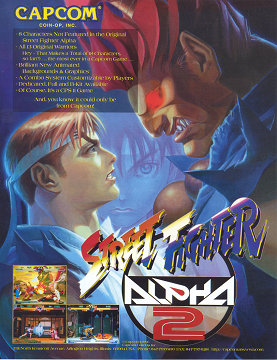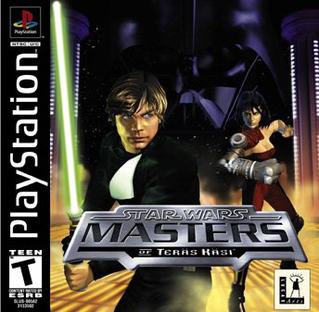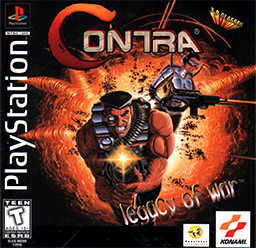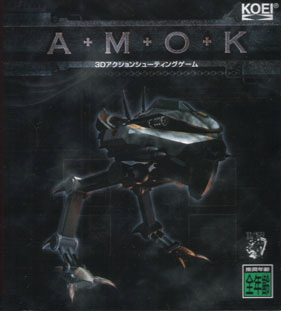
X-Men vs. Street Fighter is a crossover fighting video game developed and published by Capcom. It is Capcom's third fighting game to feature Marvel Comics characters, following X-Men: Children of the Atom and Marvel Super Heroes, and is the first installment in the Marvel vs. Capcom series. As the title suggests, the game includes characters from Marvel's X-Men franchise and the cast from Capcom's Street Fighter series. Originally released as a coin-operated arcade game in 1996, it was ported to the Sega Saturn in 1997 and the PlayStation in 1998.

Street Fighter Alpha 2, known as Street Fighter Zero 2 in Japan, Asia, South America, and Oceania, is a 1996 fighting game originally released for the CPS II arcade hardware by Capcom. The game is a remake to the previous year's Street Fighter Alpha: Warriors' Dreams. The game features a number of improvements over the original, such as new attacks, stages, endings, and gameplay features. It was followed by Street Fighter Alpha 3.

Pandemonium! is a 1996 platform video game developed by Toys for Bob and published by Crystal Dynamics for the PlayStation, Sega Saturn, Microsoft Windows, N-Gage, mobile and iOS. Pandemonium! features Fargus, a joker, and Nikki, a sorceress, who unwittingly casts a spell that destroys the town. The goal of the game is to reach the Wishing Engine, where they can wish the town back to normal. For each level, the player can choose which character to be. Each has a special move – Fargus can deliver a special spinning attack, and Nikki can double jump. The game consists of a great variety of unique gameplay objects, such as watermelons, clouds, spider webs and logs. A sequel, Pandemonium 2, was released in 1997 for PlayStation and Microsoft Windows.

Marvel Super Heroes is a fighting video game developed by Capcom. Originally released in the arcade in 1995 on the CPS-2 arcade system, it was ported to the Sega Saturn and PlayStation in late 1997. The game, alongside Marvel vs. Capcom: Clash of Super Heroes, was also included in the Marvel vs. Capcom Origins collection, released digitally for the PlayStation 3 and Xbox 360 in September 2012.

War Gods is a fighting video game originally released to arcades by Midway Games in 1996. Ports for the Nintendo 64, PlayStation and Windows were released in 1997. In the game, players control one of ten fighters who have been given great power by a mysterious ore that crashed-landed on Earth from outer space. The object of the game is to defeat all the other fighters to become the most powerful warrior on the planet.

Saturn Bomberman is an action video game by Hudson Soft for the Sega Saturn. The twelfth installment in the Bomberman series, it was first released in Japan on July 19, 1996, in Europe in May 1, 1997, and in North America in September 4, 1997. It is best known for its multiplayer functionality for up to ten players. The game received praise from critics for its enjoyable gameplay and multiplayer, but received criticism for not advancing the Bomberman series enough beyond previous installments.

Rampage World Tour is an arcade video game released in by Midway Games in 1997 as the sequel to Rampage. It was developed at Game Refuge by Brian Colin and Jeff Nauman, who designed the 1986 original. Ports were released for the Sega Saturn, Nintendo 64, Game Boy Color, PlayStation, and Microsoft Windows. It was re-released on Midway Arcade Treasures 2 and included in Rampage: Total Destruction.

Star Wars: Masters of Teräs Käsi is a fighting game developed and published by LucasArts, which was released for the PlayStation in 1997. In the game's story, which is set in the Star Wars universe, the Emperor seeks retaliation for the destruction of the Death Star and recruits the mysterious Arden Lyn to battle in the art of Teräs Käsi, an unarmed combat discipline, against leaders of the Rebel Alliance. The game features Star Wars characters, including the Emperor's Hand-turned Jedi Mara Jade.

Contra: Legacy of War is a 3D action game produced by Konami and developed by Appaloosa Interactive that was originally released in 1996 for the PlayStation and Sega Saturn. It is a follow-up to Contra: Hard Corps, and was the first of two games in the Contra series that were externally developed by Appaloosa; the second game, C: The Contra Adventure, was released in 1998. Legacy of War marks the series' shift to three-dimensional graphics and gameplay, the game was released packaged with a pair of 3D anaglyph glasses, which enables the player to view the 3D effects incorporated into the game's graphics. Legacy of War bears the distinction for being the first console game in the series to retain both the Contra title and human characters during its release in Europe and Australia. The game was scheduled to be released in Japan as well, but was cancelled.

Darklight Conflict is a space combat simulator video game developed by Rage Software and published by Electronic Arts in 1997 for the MS-DOS, and the Sega Saturn and Sony PlayStation game consoles. Players take on the part of a contemporary human fighter pilot abducted by the alien Repton species during an aerial battle, and biologically modified to become a starfighter pilot for them in their war against the Evil Ovon race.

Apocalypse is a third-person shooter video game released for the PlayStation, developed by Neversoft and published by Activision. It features actor Bruce Willis, who provides the main character's likeness and voice.

Dark Rift is a 3D fighting video game for the Nintendo 64, notable for being the first N64 game to use 60 frames per second. It has been referred to as the Nintendo 64's first native fighting game, though in actuality it started development as a Sega Saturn game. In addition, it was originally announced that the Microsoft Windows version of the game would precede the Nintendo 64 version by one month.

Dark Savior is a 3D mixed-genre video game for the Sega Saturn created by Climax Entertainment. It was referred to by GameSpot as a sequel to the developer's game for the Sega Mega Drive/Genesis, Landstalker: The Treasures of King Nole, even though the games' storylines are unrelated and their gameplay is considerably different.

Amok is a 1996 mech-themed action video game for Windows and Sega Saturn. Players guide a robot called "Slambird" through nine different scenarios to complete several objectives. The game was noted for its use of voxel-based graphics for its environments rather than the polygonal models which were standard at the time of its release. Developed by Lemon, Amok began as a technology demo for the Sega 32X, but was reworked for the Saturn after Sega discontinued support for the 32X.

Maximum Force is a light gun shooter arcade game developed by Mesa Logic for Atari Games in 1997. In 1998, Atari Games re-released the game as part of one machine called Area 51/Maximum Force Duo that also included Area 51, and later ported the game to both the Sony PlayStation and Sega Saturn game consoles.

Madden NFL 97 is a football video game released in 1996. It was the first multiplatform Madden game released for the 32-bit consoles, being released on both the PlayStation and Sega Saturn. 16-bit versions were also made for the established Super NES and Genesis platforms, as well as a portable version for the Game Boy.

Street Fighter Collection is a fighting game compilation developed and published by Capcom for the Sega Saturn and PlayStation. It contains the original Super Street Fighter II: The New Challengers (1993), its follow-up Super Street Fighter II Turbo (1994), and an enhanced version of Street Fighter Alpha 2 titled Street Fighter Alpha 2 Gold (1996) [titled Street Fighter Zero 2 Dash in Japan and Street Fighter Alpha 2 Prime in Europe], which is exclusive to this compilation.

Independence Day is a combat flight simulator video game based on the 1996 film of the same name. The game was developed by Radical Entertainment and published by Fox Interactive for Microsoft Windows, PlayStation and Sega Saturn.

Sky Target is a 1995 arcade game by Sega. A rail shooter featuring a number of planes including the default F-14D Super Tomcat, it is best remembered for its semi-official connection to Sega's earlier hit After Burner. Although never billed as a sequel, its overt similarities to the 1987 classic were nonetheless referenced in official promotional materials and recognized by the media. Plus, it features a revised version of the "After Burner" music theme within its soundtrack.

Micro Machines V3 is a racing video game developed by Codemasters and Novalicious for PlayStation, Microsoft Windows, Nintendo 64, and Game Boy Color.



















